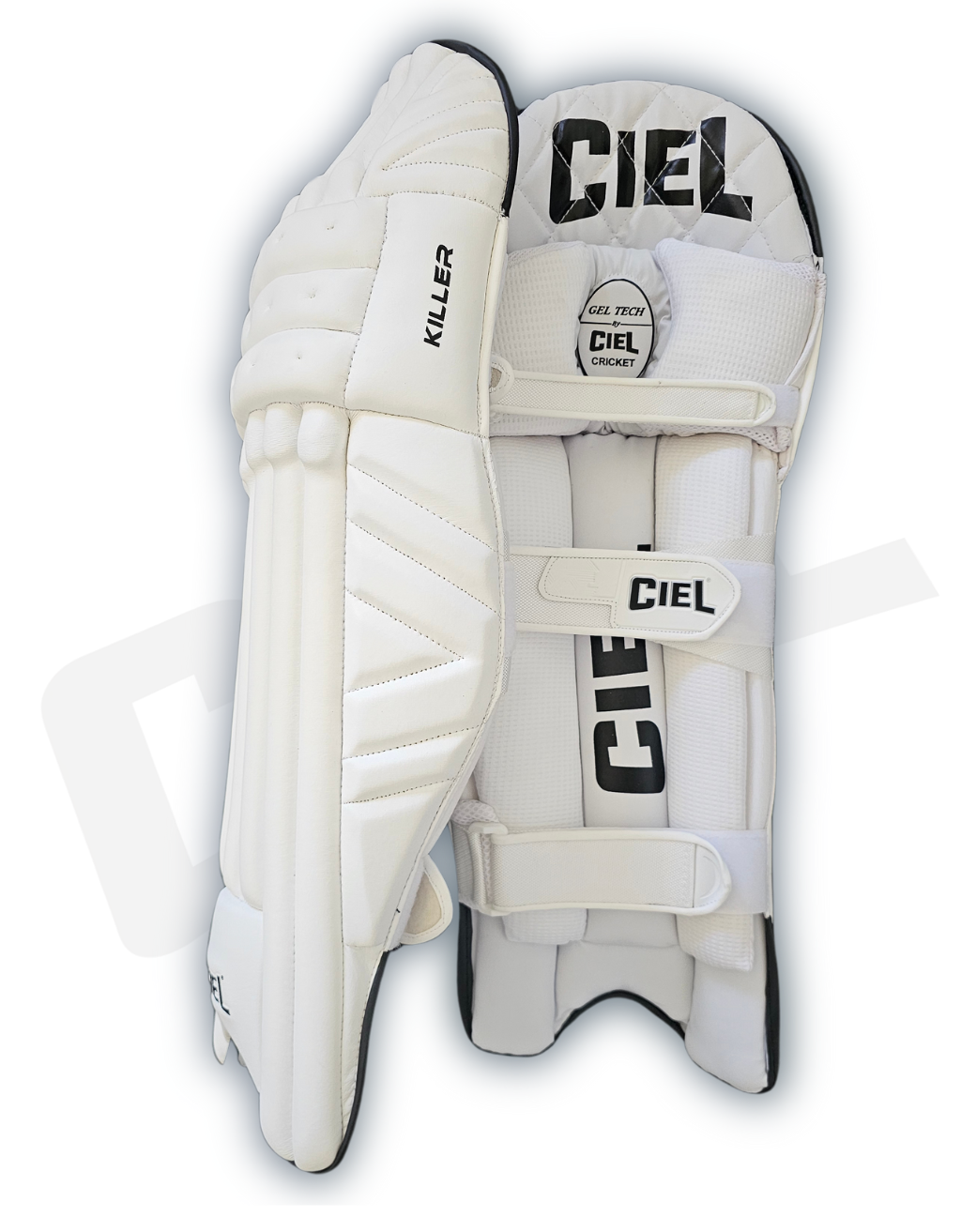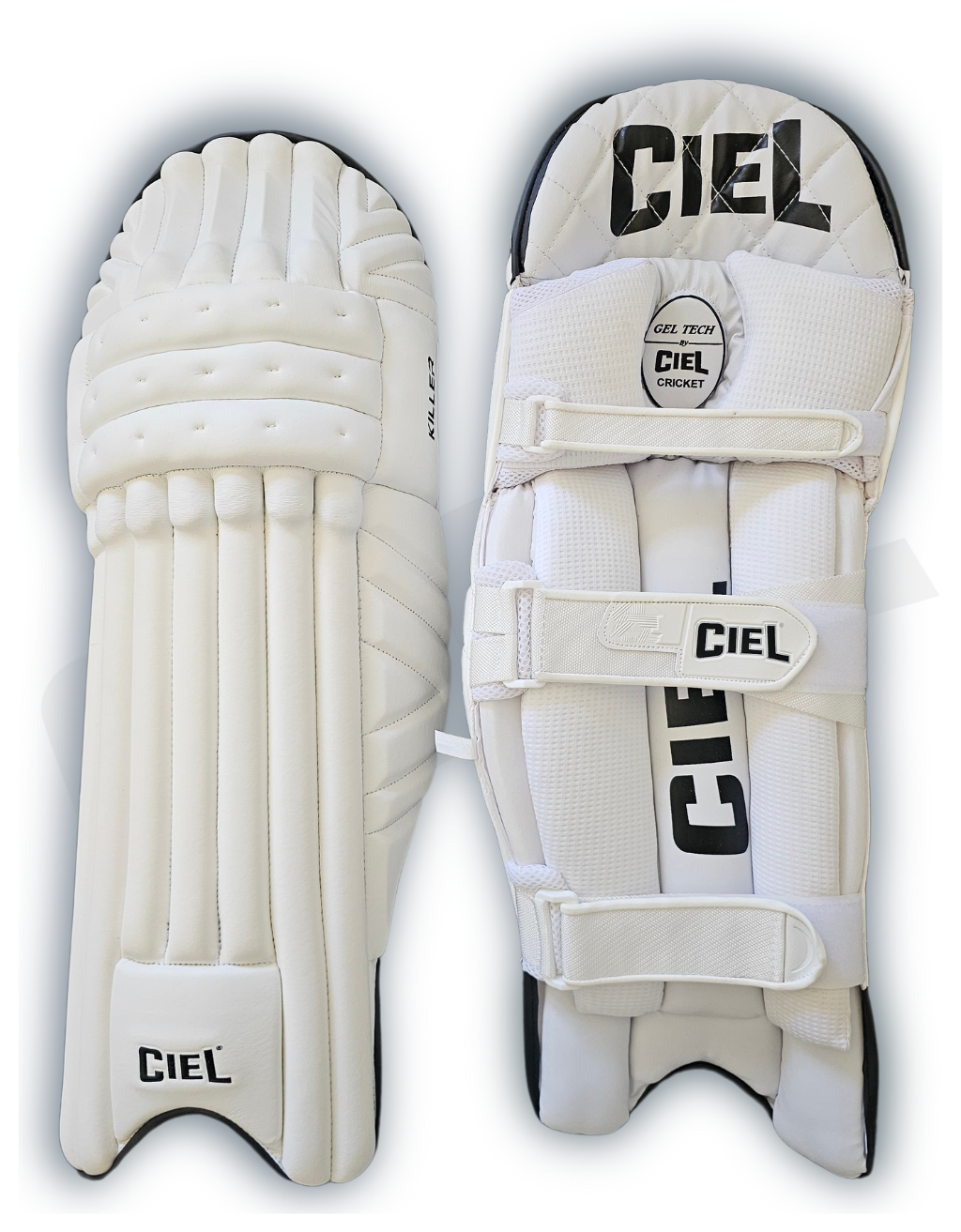BUY FROM VIDEOS

KILLER CRICKET BATTING LEG GUARD
Rs. 2,999.00
Right-Handed Or Left-Handed:
Batting Leg-Guard Size:
Batting Leg-Guard Color:
Rs. 2,999.00
KILLER BATTING GLOVES
Rs. 1,999.00
Batting Glove Type:
Right-Handed Or Left-Handed:
Batting Gloves Size:
Rs. 1,999.00
LEG GUARD
PROTECTION WHILE BATTING

KILLER CRICKET BATTING LEG GUARD
Rs. 2,999.00
Right-Handed Or Left-Handed:
Batting Leg-Guard Size:
Batting Leg-Guard Color:
BATTING GLOVES
PROTECTION WHILE BATTING
KILLER BATTING GLOVES
Rs. 1,999.00
Batting Glove Type:
Right-Handed Or Left-Handed:
Batting Gloves Size:
Question Players Ask About Cricket Protecting Gears
What are the essential protective gear items for cricket batsmen?
Cricket batsmen typically require batting gloves and batting leg guards (pads) to protect their hands and legs from high-speed deliveries.
Why are batting gloves important in cricket?
Batting gloves provide grip and protect the hands from impact injuries caused by the cricket ball.
How do I choose the right size for batting gloves?
Measure the length of your hand from the tip of your middle finger to the base of your palm and refer to the manufacturer's sizing chart.
What materials are commonly used in batting gloves?
Batting gloves are typically made from leather, with added padding materials like foam or rubber for protection.
How should batting gloves fit?
They should fit snugly without restricting movement, ensuring optimal grip and protection.
What are batting leg guards, and why are they necessary?
Batting leg guards, or pads, protect the shins, knees, and lower thighs from the impact of the cricket ball.
What is the difference between traditional and modern batting pads?
Traditional pads are heavier and made from materials like canvas and cane, while modern pads use lightweight synthetic materials for enhanced mobility.
Can I use batting pads for wicket-keeping?
No, wicket-keeping pads are designed differently, being smaller and lighter to allow for greater agility.
What features should I look for in wicket-keeping gloves?
Look for a good fit, quality padding, durable materials, and appropriate webbing between the thumb and index finger as per regulations.
Are there specific sizes for wicket-keeping gloves?
Yes, they come in various sizes. Measure your hand and refer to the manufacturer's sizing chart to ensure a proper fit.
What materials are wicket-keeping gloves made from?
Typically, they are made from leather with added padding and rubber for grip and protection.
How do I maintain and clean my wicket-keeping gloves?
Clean them with a damp cloth after use and allow them to air dry naturally. Avoid direct sunlight to prevent material degradation.
What are wicket-keeping leg guards, and are they necessary?
Wicket-keeping leg guards protect the shins and knees from impact and are essential for safety behind the stumps.
How do wicket-keeping pads differ from batting pads?
Wicket-keeping pads are lighter, smaller, and lack the knee protection flaps found on batting pads to allow for greater movement.
How should wicket-keeping pads fit?
They should cover the shin adequately without hindering movement, secured firmly but comfortably.
Can wicket-keepers wear batting gloves instead of specialized gloves?
No, wicket-keeping gloves are specifically designed to catch and handle the ball effectively, providing necessary protection and flexibility.
Are there regulations governing the design of wicket-keeping gloves?
Yes, according to the Laws of Cricket, wicket-keeping gloves must not have webbing between the fingers except between the thumb and index finger, and this webbing must meet specific criteria.
How often should I replace my cricket protective gear?
Replace your gear when you notice significant wear and tear, reduced protection, or loss of structural integrity
Where can I purchase quality cricket protective equipment?
Quality cricket protective equipment is available at specialized sports retailers, both online and in-store, offering a range of options to suit different needs and budgets.


